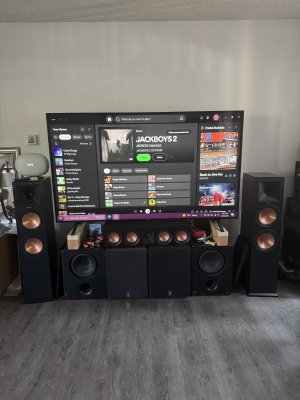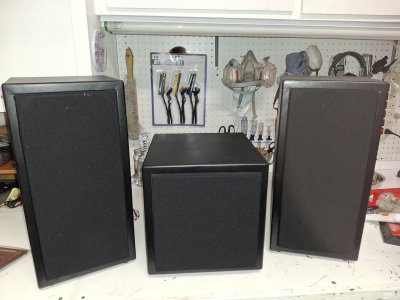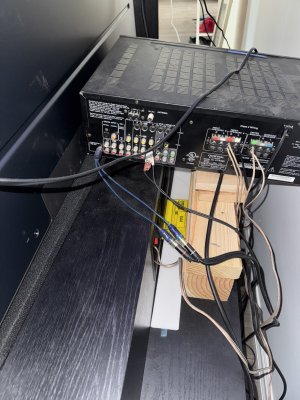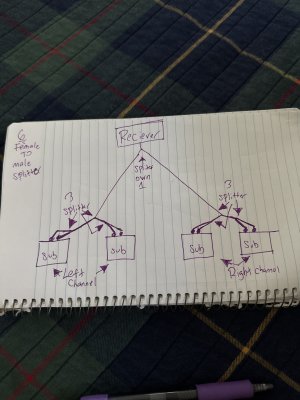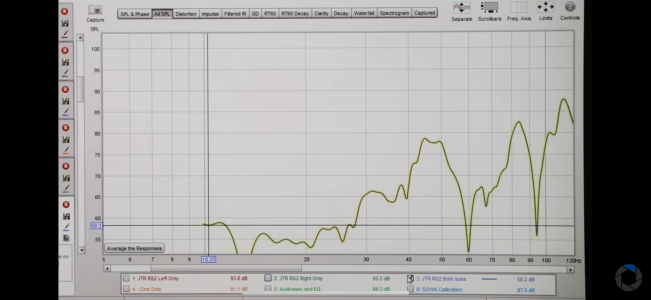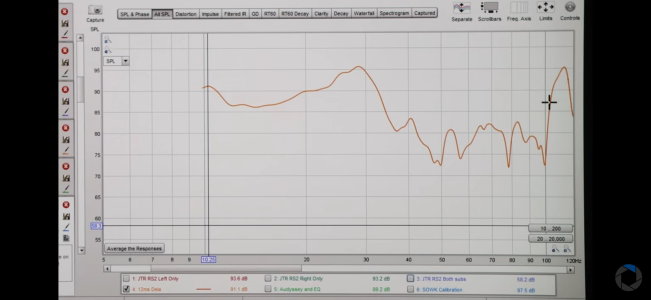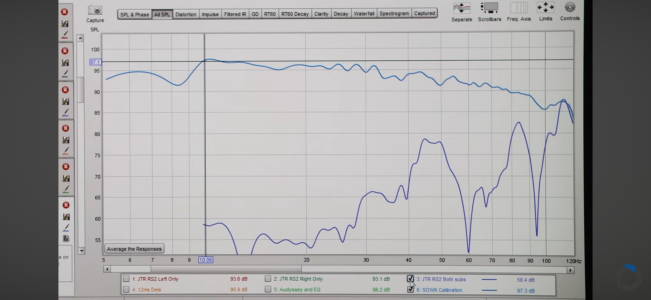I just checked out your post, that’s a clean ass setup! How you liking those 8000f 2’s? Initially I wanted the 1st gen because they are $800 the pair on Crutchfield and I did a good amount of reading and it’s about 50/50 reviews from people saying the gen1 vs gen 2 sound better or the same. Btw….. that RC64 is a fucking BEAST

I know it’s sealed but with 4 6.5’s who cares haha. My current RP504c sounds pretty cool no lie but I’m betting that one is in a class of its own. Maybe on day in the future I’d like to grab a set of RF7 towers, dual 10’s power tower must sound ridiculous!!
Thanks so much. Yeah, the 8000F II's are great. I love them. This review by Andrew Robbins and his wife Christie, who refuses to go on camera,

sold me on them.
Speaking of the RF-7's, I was looking at the even bigger RF-7 III's but couldn't justify the cost / benefit to myself. They're serious overkill for me and probably you too. I took the extra that they would've cost me and put that towards the subs and the RC-64 III.
Don't buy home audio from Crutchfield. They're insanely expensive. You can do better shopping elsewhere. I bought my Klipsch speakers, except for my center channel, from Amazon.
As the center channel is the cornerstone/anchor of a good home theater I went ahead and splurged on that one. I bought my RC-64 III as B-stock from
SoundSeller out of Wisconsin for a good price. As B-stock, I did have to replace one of the 6.5's but I was able to source that from
The Speaker Exchange out of Florida for just under $100 shipped to my door. The speaker was in OEM packaging from the factory and the cabinet was immaculate!
I really, really need to get an external AMP for that center channel, it take a LOT of power to drive that behemoth. I've been looking at the
Emotiva and the
Monoprice Monolith Amps. I've also been drooling over some Audio Control hardware, like the
Pantages G4, although the AC stuff is next level price range.
I also looked at the RP-504C II. That would've been my second choice. It's a very good speaker. You're 504C is a great speaker! Don't discount what you have.
These guys do a great comparison between the two.
I’m pretty happy with the RP280’s, if I could land a deal on a set of RP600m’s I’d jump on em in a heart beat for the 5.1 surround.
My current Onkyo receiver is pretty old but honestly does a decent job, zero complaints. But I do have 2 questions for you fellas.
1. Amplification, maybe I’m crazy but I’ve seen plenty of people running DJ amps to power their home theater. Worthwhile mentions include Crown and QSC amps. From what I see they are pretty cheap amps around 200-500x2 channels. Which would be more than enough to power the towers or anything else you throw at them. Only thing would be the heat, they do get kinda hot. Only other option would the the Emotiva basx3 or 5 channel and outlaw 5000x.
As far as amplification, look at the Emotiva or Monoprice Amps. Those would be my recommendation. Amps have come a long ways over the years and you can get a solid amp without having to spend a fortune.
2. Sound deadening, I see you guys are rocking carpet; would it make sense to buy a carpet to put on the floor between the TV and couch?? I’ve read that does help with acoustics.
2b. Are you guys running any acoustic panels on the walls?? I see them on FB marketplace all the time, do they really help as advertised or snake oil?
Side note, I’m uber jelly of yours guys theaters rooms, that’s a total dream of mine. Besides having a 700whp Thunderbird

having a room like that would be next level.
Yes, I have a carpeted room and I have added sound treatments to the walls. I built the panels myself with Rockwool. I've had issues figuring out how to hang them but that's a story for another day. I did a lot of research into it and just settled on dropping some panels around the room at various typical reflection points. My bonus room has an odd configuration and I really had to do some research to figure out how best to treat it and arrange everything.
Acoustic panels and room sound treatment are not snake oil. It's a great way to get much more enjoyment out of your system by taming the room that it's in.
For the windows, fortunately I was able to source some heavy drapes for the windows from a high end home store years ago for a good price before everything went to shit with the pandemic closing so many stores, everything moving online and now tariffs jacking prices up.
I'm still adding and hanging panels. I've had a hard time finding acoustic fabric for a good price to wrap them in. If you just want to buy ready made panels a few at a time until you can fill your room
GIK Acoustics makes the best panels you can buy IMHO. They'll also help design your room treatment for free.
Thanks so much. Just like our cars, everyone has different resources and ability to afford a great build. I've been told and often repeat that you're car can be as fast as your pockets are deep. We all do the best we can with what we have and what we can afford. This is true for everything in life.
Also not to be nosy, but what do you guys do for a living to afford that stuff? I’m currently a delivery driver for a custom lamp company, but planning on hopefully getting my smog check certificate and opening a business in the future.
I'm in my early 50's now and have been blessed to land in a great career that has given me the opportunity to have many nice things. It's taken me a lifetime to get to where I am now that I can afford these things. I didn't buy all that stuff until just November of last year. Like Brandon, "All the stuff for my theater was planned for, saved for, then eventually purchased when the time was right." It just so happened that the right time for both of us happened to land pretty close together. As you can see, Brandon and I both went different routes with our home theaters. I look forward to seeing where your journey takes you to.
I've also invested well and reaped the dividends of that. I've been working as a Nondestructive Evaluation (NDE) inspector since I got out of the military in the early 2000's. I also have my American Welding Society, Certified Welding Inspector (AWS CWI) certification, which is a big one to have in my industry. I currently work for a company that specializes in power plant work. We are the original equipment manufacture of their turbines and generators and provide maintenance, repair, replacement, upgrade and inspection services on the units at power plants all over the country and around the world. It's a financially rewarding job but I do sacrifice a lot of time away from home to do it. Those here who have know me for years can attest to that. I've met with many members here over the years in my travels. I don't call myself the traveling Trunk Monkey for nothing!

We all have to find our nitch/niche in life and build on that. Best wishes with your journey and your plans. If you'd like to discuss more just PM me.



